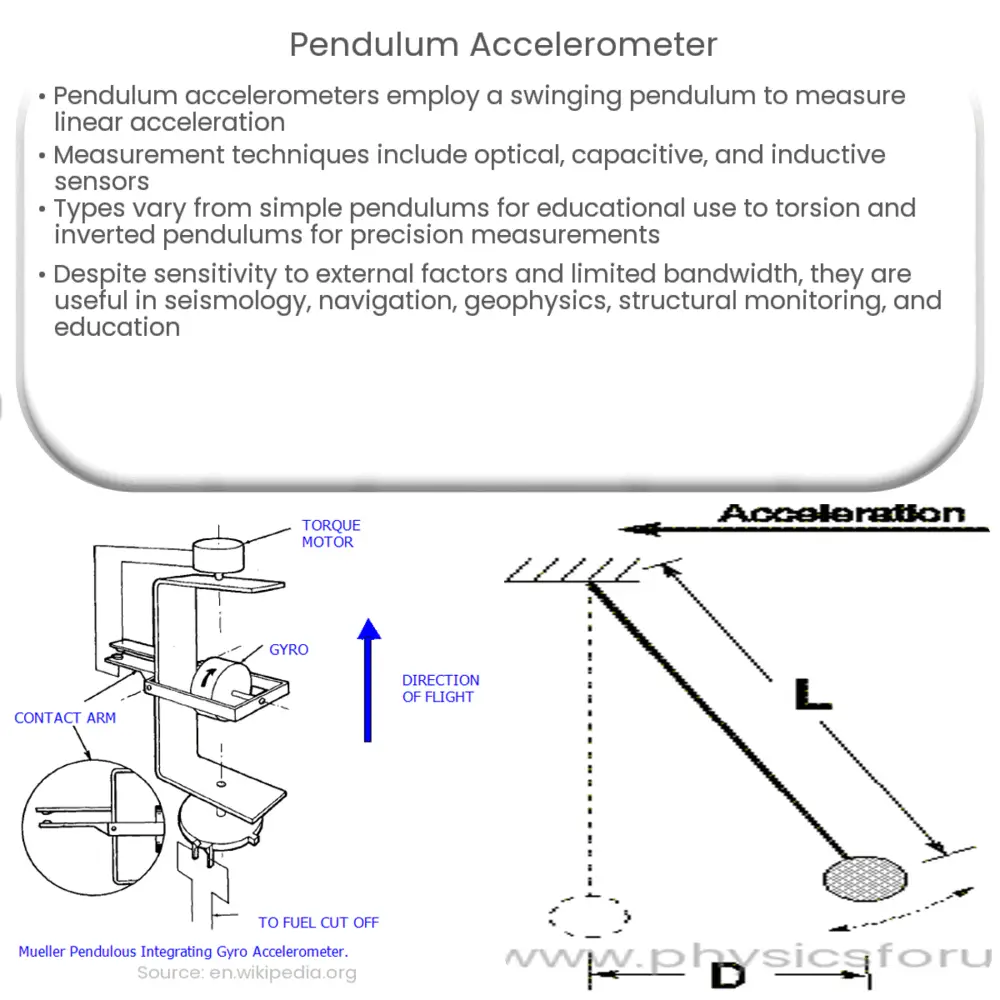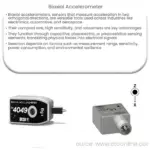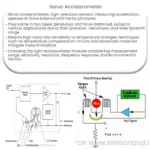Pendulum accelerometers use a swinging mass to measure acceleration, offering high sensitivity in applications like seismology and navigation.

Pendulum Accelerometer: The Ingenious Mechanism for Measuring Acceleration
Introduction
From smartphones to aerospace applications, accelerometers are widely used devices that measure acceleration and play a crucial role in various industries. One of the most intriguing and lesser-known types of accelerometers is the pendulum accelerometer. In this article, we delve into the intricacies of pendulum accelerometers, their working principles, and their applications in various fields.
What is a Pendulum Accelerometer?
A pendulum accelerometer is a mechanical device that employs the concept of a pendulum to measure linear acceleration. The fundamental principle behind a pendulum accelerometer is the swinging motion of the pendulum, which changes in response to external acceleration. By measuring the displacement or change in position of the pendulum, one can obtain information about the magnitude and direction of the acceleration applied to the device.
How does a Pendulum Accelerometer work?
At the heart of a pendulum accelerometer is a mass suspended by a rigid or flexible support, typically a beam or rod. The mass is allowed to oscillate freely around a pivot point. When subjected to acceleration, the pendulum experiences a force that causes it to move from its equilibrium position. The displacement of the pendulum is directly proportional to the applied acceleration.
There are various methods to measure the displacement of the pendulum. Some common techniques include:
- Optical sensors: These sensors utilize light to detect the pendulum’s position. An optical sensor can measure the interruption of a light beam or the reflection of light from the pendulum’s surface to determine its position.
- Capacitive sensors: Capacitive sensors measure changes in capacitance between the pendulum and a fixed plate. As the pendulum moves, the distance between it and the fixed plate changes, causing a change in capacitance, which is then measured by the sensor.
- Inductive sensors: Inductive sensors consist of a coil and a movable magnetic core attached to the pendulum. As the pendulum moves, the magnetic core shifts within the coil, altering the coil’s inductance. This change in inductance is used to measure the pendulum’s position.
Types of Pendulum Accelerometers
There are several types of pendulum accelerometers, each with its own unique characteristics and advantages. Some common types include:
- Simple pendulum accelerometer: This type consists of a mass attached to a flexible support, such as a string or wire. It is the most basic form of a pendulum accelerometer and is typically used for educational purposes.
- Torsion pendulum accelerometer: In this type, a mass is suspended by a thin rod or wire that can twist around its axis. The torsional motion of the support allows for a more sensitive measurement of acceleration.
- Inverted pendulum accelerometer: This design features a mass supported by a rigid beam that is fixed at its top end, allowing the mass to swing in an inverted pendulum motion. The inverted configuration allows for a larger range of motion and improved sensitivity.
Advantages and Disadvantages of Pendulum Accelerometers
Like any technology, pendulum accelerometers have their own set of advantages and disadvantages.
Advantages:
- Simple design: Pendulum accelerometers have a straightforward design with few components, making them relatively easy to manufacture and maintain.
- High sensitivity: Some types of pendulum accelerometers, such as torsion and inverted pendulums, offer high sensitivity to acceleration, making them suitable for precision measurements.
- Wide range of applications: Due to their versatility, pendulum accelerometers can be used in a variety of applications, ranging from educational purposes to high-precision scientific experiments.
Disadvantages:
- Size and weight: Pendulum accelerometers are generally larger and heavier than other types of accelerometers, making them less suitable for compact or portable applications.
- Sensitivity to external factors: Pendulum accelerometers can be sensitive to temperature changes, air currents, and other environmental factors, which may affect their accuracy.
- Limited bandwidth: Pendulum accelerometers have a limited frequency response, making them less suitable for high-frequency or dynamic applications.
Applications of Pendulum Accelerometers
Pendulum accelerometers have found use in various fields due to their unique characteristics. Some notable applications include:
- Seismology: Pendulum accelerometers are used in seismometers to measure ground motion during earthquakes, helping scientists better understand seismic events and improve earthquake prediction models.
- Navigation: Inertial navigation systems, which are often used in aerospace and marine applications, rely on pendulum accelerometers to measure acceleration and provide accurate position and velocity information.
- Geophysics: Pendulum accelerometers are utilized in geophysical surveys to measure gravity anomalies, aiding in the exploration for natural resources such as oil, gas, and minerals.
- Structural monitoring: Engineers use pendulum accelerometers to monitor the integrity of buildings, bridges, and other structures, providing crucial data for maintenance and safety assessments.
- Education: As simple and easily understandable devices, pendulum accelerometers are often employed in educational settings to teach students about fundamental physics concepts, such as acceleration, force, and motion.
Conclusion
In conclusion, pendulum accelerometers are versatile and valuable tools in various fields. Although they may not be as compact or suitable for high-frequency applications as other types of accelerometers, their simplicity, high sensitivity, and wide range of applications make them an essential technology for many industries. Understanding the principles behind pendulum accelerometers can help engineers and scientists further optimize their designs, improving their performance and expanding their potential applications.




